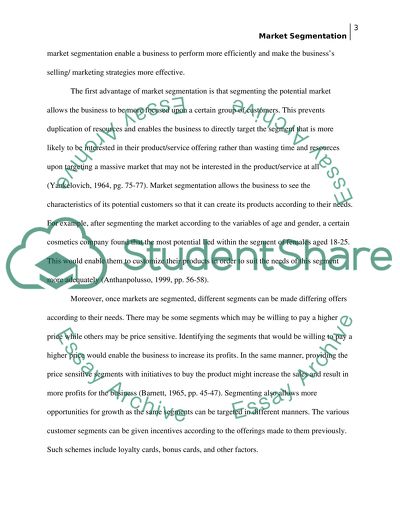Cite this document
(“The Process of Market Segmentation Essay Example | Topics and Well Written Essays - 1500 words”, n.d.)
The Process of Market Segmentation Essay Example | Topics and Well Written Essays - 1500 words. Retrieved from https://studentshare.org/marketing/1444168-explain-the-process-of-market-segmentation-why-is
The Process of Market Segmentation Essay Example | Topics and Well Written Essays - 1500 words. Retrieved from https://studentshare.org/marketing/1444168-explain-the-process-of-market-segmentation-why-is
(The Process of Market Segmentation Essay Example | Topics and Well Written Essays - 1500 Words)
The Process of Market Segmentation Essay Example | Topics and Well Written Essays - 1500 Words. https://studentshare.org/marketing/1444168-explain-the-process-of-market-segmentation-why-is.
The Process of Market Segmentation Essay Example | Topics and Well Written Essays - 1500 Words. https://studentshare.org/marketing/1444168-explain-the-process-of-market-segmentation-why-is.
“The Process of Market Segmentation Essay Example | Topics and Well Written Essays - 1500 Words”, n.d. https://studentshare.org/marketing/1444168-explain-the-process-of-market-segmentation-why-is.


